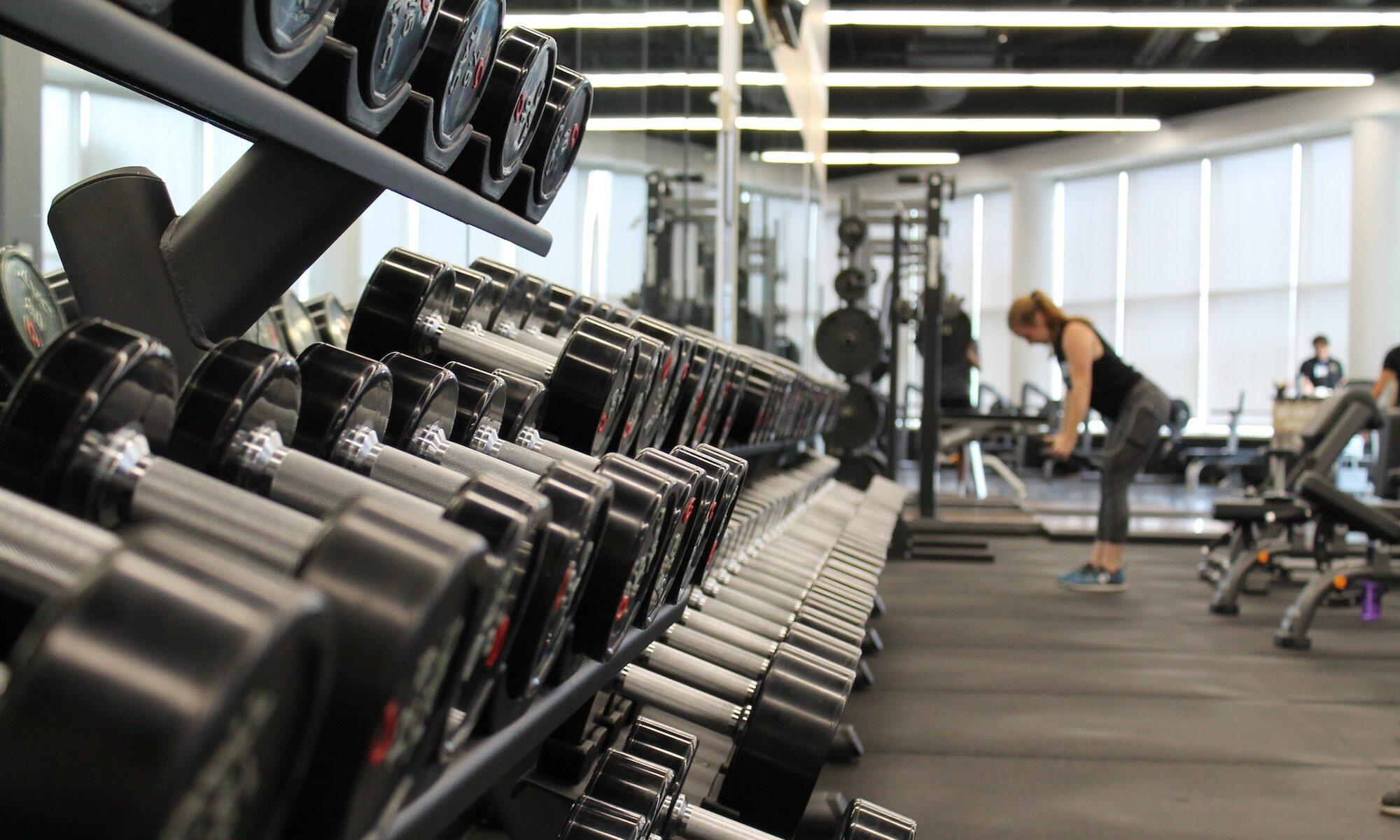Is HIIT or endurance training the right choice for you? This article explores the key differences, benefits, and factors to consider. Find the perfect training method that suits your goals and fitness level. Whether you want to build strength, improve cardiovascular health, or mix up your routine, we’ve got you covered. Make an informed decision and achieve your fitness goals.
Are you feeling torn between High Intensity Interval Training (HIIT) and Endurance Training? Unsure which one is the right fit for you? Well, fret no more! In this article, we will explore the key differences between HIIT and Endurance Training, helping you make an informed decision about which exercise regimen suits you best. Whether you want to build strength, improve cardiovascular health, or simply mix up your workout routine, we’ve got you covered. So let’s dive right in and discover the perfect training method that will keep you motivated and achieve your fitness goals.
What is HIIT?
Definition of HIIT
HIIT, or High-Intensity Interval Training, is a form of exercise that involves short bursts of intense activity followed by periods of rest or lower-intensity exercise. The intense intervals are typically performed at about 80-95% of your maximum heart rate, pushing your body to its limits for a short period of time. HIIT workouts can include a variety of exercises such as sprinting, burpees, jump squats, or kettlebell swings.
Benefits of HIIT
There are numerous benefits associated with HIIT. Firstly, it is known to be a highly efficient way to burn calories and lose weight. The intense bursts of activity stimulate the metabolism, which leads to increased fat burning even after the workout is over. Additionally, HIIT has been shown to improve cardiovascular health by increasing heart rate and enhancing oxygen uptake. This form of training also helps to build lean muscle, improve endurance, and boost overall fitness levels.
Types of HIIT workouts
There are various types of HIIT workouts, each with its own unique characteristics. One popular type is Tabata, which involves 20 seconds of intense exercise followed by 10 seconds of rest, repeated for a total of 8 rounds. Another option is the 30-20-10 workout, where you perform 30 seconds of moderate exercise, followed by 20 seconds of intense exercise, and then 10 seconds of all-out effort. Circuit training is another common form of HIIT, where you move quickly between different exercises, targeting different muscle groups.
What is Endurance Training?
Definition of Endurance Training
Endurance training focuses on improving your body’s ability to sustain prolonged exercise and perform at a steady pace for an extended period of time. It involves activities that build cardiovascular and muscular endurance, such as long-distance running, cycling, or swimming. The goal of endurance training is to improve your aerobic capacity, allowing you to perform for longer durations and delay the onset of fatigue.
Benefits of Endurance Training
Endurance training offers various benefits for both physical and mental health. It enhances cardiovascular fitness by strengthening the heart and lungs, improving oxygen delivery to the muscles. This type of training also aids in weight management, as it burns calories and promotes a leaner body composition. Additionally, endurance training can boost mental resilience and improve mood by releasing endorphins, the body’s natural feel-good chemicals.
Types of Endurance Training
There are different types of endurance training that cater to individual preferences and goals. Long, slow distance (LSD) training involves low-intensity, steady-state exercises performed for a prolonged period of time. This can include activities like long-distance running or cycling. Tempo training, on the other hand, focuses on maintaining a specific intensity level, often slightly below your maximum effort, for an extended duration. Interval training can also be considered a type of endurance training, where you alternate between intense efforts and recovery periods.
Differences Between HIIT and Endurance Training
Intensity Level
The main difference between HIIT and endurance training lies in the intensity level. HIIT involves high-intensity bursts of exercise, pushing your body to its limits, whereas endurance training focuses on sustaining a moderate intensity level for longer periods of time.
Duration
HIIT sessions are typically shorter in duration, ranging from 10-30 minutes, due to the intense nature of the workouts. On the other hand, endurance training requires longer durations, often ranging from 45 minutes to several hours, depending on the activity and fitness level.
Workout Structure
HIIT workouts consist of short, intense intervals followed by rest or lower-intensity recovery periods. Endurance training, on the other hand, involves maintaining a steady pace or intensity level throughout the workout.
Energy Systems Targeted
HIIT primarily targets the anaerobic energy system, which relies on stored energy in the muscles. This system is activated during short, intense bursts of exercise. Endurance training primarily targets the aerobic energy system, which utilizes oxygen to produce energy over a longer duration.
Cardiovascular Benefits
Both HIIT and endurance training offer cardiovascular benefits. HIIT improves cardiovascular fitness by challenging the heart rate and oxygen uptake during intense intervals. Endurance training, on the other hand, enhances cardiovascular health by improving the heart’s efficiency and increasing its stroke volume, which allows for a greater amount of blood to be pumped with each beat.
Choosing the Right Training Method
Fitness Goals
When choosing between HIIT and endurance training, it’s important to consider your fitness goals. If your primary goal is to improve speed, power, and explosiveness, HIIT may be the better choice. If your goal is to improve endurance, stamina, and overall cardiovascular fitness, endurance training is likely a better fit.
Time Commitment
Consider the amount of time you’re willing to commit to your workouts. If you have limited time available, HIIT can provide a highly effective workout in a shorter period. Endurance training, however, often requires more time due to the longer durations involved.
Fitness Level
Your current fitness level is another important factor to consider. HIIT can be challenging for beginners or individuals with certain health conditions, as it places greater stress on the body. Endurance training, on the other hand, can be more easily modified to accommodate different fitness levels.
Preference for Variety
Consider your preference for workout variety. HIIT workouts often offer a wide range of exercises and intervals, keeping the workout engaging and exciting. Endurance training may involve repetitive motions for longer durations, which may be less appealing to some individuals.
Injury Risk
Evaluate your risk for injuries and joint impact. HIIT workouts, with their high-intensity intervals, may put more stress on the joints and carry a higher risk of injury. Endurance training, with its lower intensity and longer durations, may pose a lower risk of injury for some individuals.
Weight Loss and Fat Burning
Effectiveness of HIIT for Weight Loss
HIIT has gained popularity for its effectiveness in weight loss and fat burning. The intense intervals in HIIT workouts stimulate the metabolism, leading to increased calorie expenditure during and after the workout. This increased metabolism can enhance fat burning and contribute to weight loss over time.
Effectiveness of Endurance Training for Weight Loss
Endurance training can also contribute to weight loss and fat burning, albeit at a slightly lower rate compared to HIIT. By maintaining a steady and prolonged effort, endurance training helps to create a calorie deficit and improve overall body composition. The consistent calorie burn during endurance exercises can contribute to gradual weight loss.
Combining HIIT and Endurance Training for Optimal Results
For individuals looking to maximize weight loss and fat burning, combining both HIIT and endurance training can be highly beneficial. This combination allows for a comprehensive approach to fitness, targeting different energy systems and providing variety in workouts. Alternating between HIIT and endurance training days can help prevent plateauing and keep the body challenged.
Improving Cardiovascular Health
Impact of HIIT on Cardiovascular Health
HIIT has been found to have a significant impact on cardiovascular health. The intense intervals in HIIT workouts elevate heart rate and increase oxygen uptake, improving the heart’s efficiency and cardiac output. HIIT has also been shown to enhance the body’s ability to utilize and transport oxygen, leading to improved cardiovascular endurance.
Impact of Endurance Training on Cardiovascular Health
Endurance training, with its longer durations and sustained effort, also has a significant impact on cardiovascular health. It strengthens the heart muscle and improves its ability to pump blood, enhancing overall cardiovascular fitness. The increased blood flow and oxygen delivery to the muscles during endurance training contribute to a healthier cardiovascular system.
Considerations for Individuals with Heart Conditions
Individuals with pre-existing heart conditions should consult with their healthcare provider before starting any exercise program, including HIIT or endurance training. These individuals may need modifications or guidance to ensure safe participation and to minimize the risk of potential complications.
Building Muscle and Strength
Muscle Building Potential of HIIT
While HIIT is not traditionally associated with muscle building, it can still have benefits in that regard. The combination of intense exercises and short rest periods in HIIT workouts can stimulate muscle growth and improve muscle tone. HIIT workouts that incorporate resistance training exercises, such as bodyweight movements or kettlebell swings, can further enhance muscle-building potential.
Muscle Building Potential of Endurance Training
Endurance training, particularly when combined with resistance exercises, can also contribute to muscle building and strength gains. exercises such as long-distance swimming or rowing, can help to increase muscle size and strength in specific muscle groups.
Incorporating Strength Training with HIIT or Endurance Training
To maximize muscle building and strength gains, incorporating additional strength training exercises alongside HIIT or endurance training is recommended. Strength training exercises can be performed on separate days or as part of the same workout session. This combination can promote balanced muscle development and enhance overall fitness.
Time Efficiency
Shorter Workouts with HIIT
One of the major advantages of HIIT is its time efficiency. HIIT workouts are typically shorter in duration due to the high intensity of the exercise. A 20-minute HIIT session can provide similar or even greater benefits compared to longer endurance workouts. This time-saving aspect makes HIIT a popular choice for individuals with busy schedules.
Longer Workouts with Endurance Training
Endurance training, by its nature, requires longer durations to challenge the aerobic system and build endurance. These workouts often range from 45 minutes to several hours, depending on the activity and fitness level. If time is not a constraint and you enjoy longer sessions, endurance training can be a suitable choice.
Benefits of Time-Efficient Workouts
Time-efficient workouts, such as HIIT, can be beneficial for individuals with limited time or those who prefer shorter bursts of exercise. They provide an opportunity to fit physical activity into a busy schedule without sacrificing effectiveness. Additionally, shorter workouts may help to maintain motivation and prevent boredom associated with longer sessions.
Incorporating HIIT and Endurance Training into Your Routine
Balancing Frequency and Intensity
When incorporating HIIT and endurance training into your routine, it is essential to find the right balance of frequency and intensity. Seek to alternate between high-intensity HIIT workouts and longer, moderate-intensity endurance sessions. This balance allows for adequate recovery and prevents overtraining.
Creating a Structured Training Plan
Developing a structured training plan can help you stay consistent and make progress in both HIIT and endurance training. Plan your workouts in advance, considering factors such as frequency, duration, and intensity. Remember to incorporate rest days to allow for recovery and reduce the risk of injuries.
Alternating HIIT and Endurance Training
Alternating between HIIT and endurance training sessions throughout the week can provide a well-rounded approach to fitness. This allows you to target different energy systems and muscle groups while also providing variety in your workouts. Rotating between the two training methods can also help prevent boredom and plateaus.
Considering Cross-Training Activities
In addition to HIIT and endurance training, consider incorporating cross-training activities into your routine. This may include activities such as yoga, Pilates, or strength training exercises. Cross-training can help balance muscle development, improve flexibility, and provide a break from the high-intensity demands of HIIT and endurance training.
Recovery and Rest Days
Lastly, prioritize recovery and rest days in your training plan. Both HIIT and endurance training can be physically demanding, and adequate rest is crucial for the body to repair and rebuild. Listen to your body’s cues and take rest days when needed to prevent overuse injuries and maintain long-term progress.
Consulting a Fitness Professional
Importance of Professional Guidance
It is always advisable to consult a fitness professional before starting a new exercise program or making significant changes to your current routine. A fitness professional can provide personalized guidance based on your specific goals, fitness level, and any potential limitations or health concerns.
Assessing Personal Fitness Goals
A fitness professional can help assess your individual goals and recommend the most appropriate training methods based on those goals. They can factor in your preferences, time availability, and current fitness level to create a plan that is tailored to your needs.
Adjusting Training Intensity and Volume
Having a fitness professional guide your training can help ensure that you are training at the appropriate intensity and volume for your fitness level. They can help you push yourself safely without risking injury or overtraining. Regular assessments and adjustments can be made to ensure continuous progress.
Monitoring Progress and Making Adjustments
A fitness professional can monitor your progress and make necessary adjustments to your training plan as needed. This includes modifying exercises, increasing intensity, or changing the duration of workouts to continue challenging your body and avoiding plateaus.
In conclusion, both HIIT and endurance training have their own unique benefits, and the choice between the two ultimately depends on your individual goals, preferences, and constraints. Consider your fitness goals, time availability, fitness level, and preference for variety when making your decision. Alternatively, combining both HIIT and endurance training in a well-structured plan can provide optimal results, targeting various energy systems and muscle groups. Whichever training method you choose, consulting with a fitness professional can ensure a safe and effective approach to achieving your fitness goals. Remember to prioritize recovery and listen to your body throughout your fitness journey.


